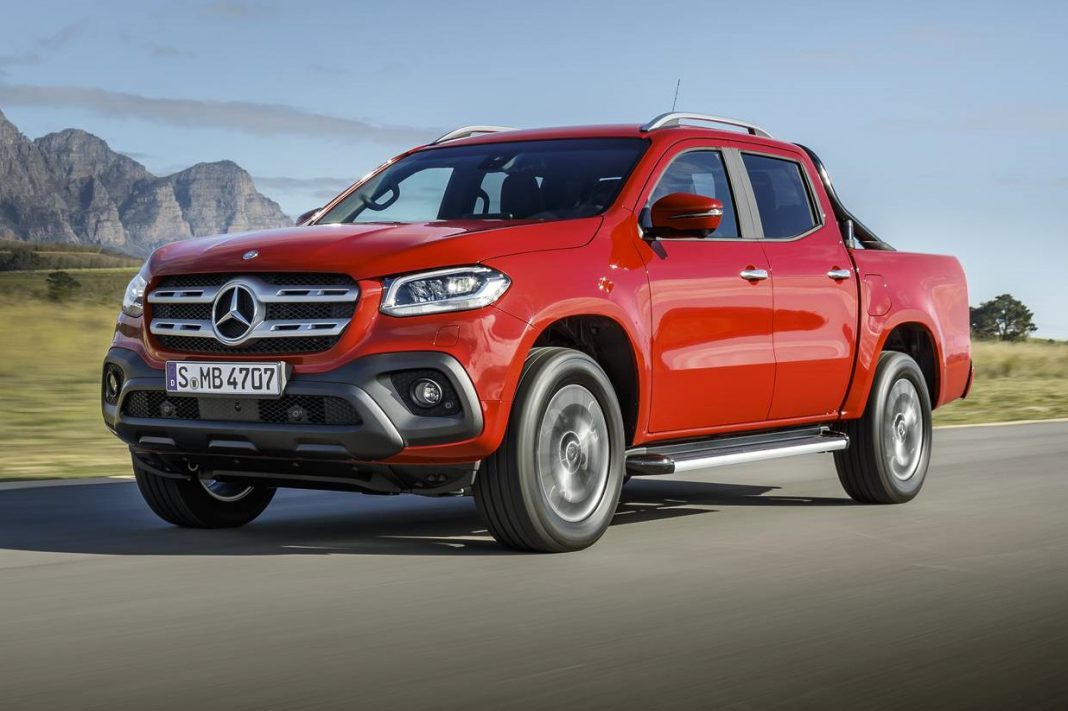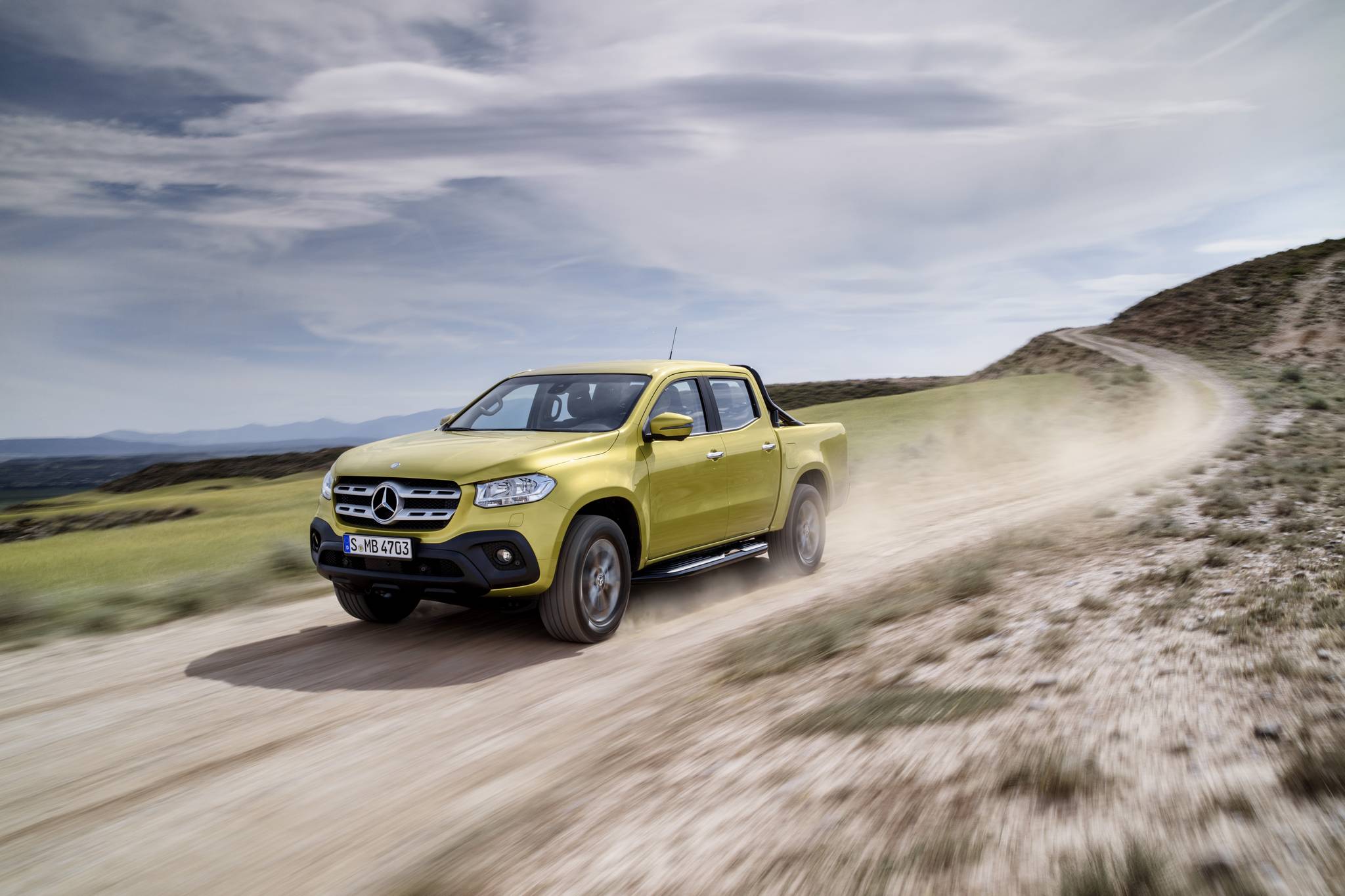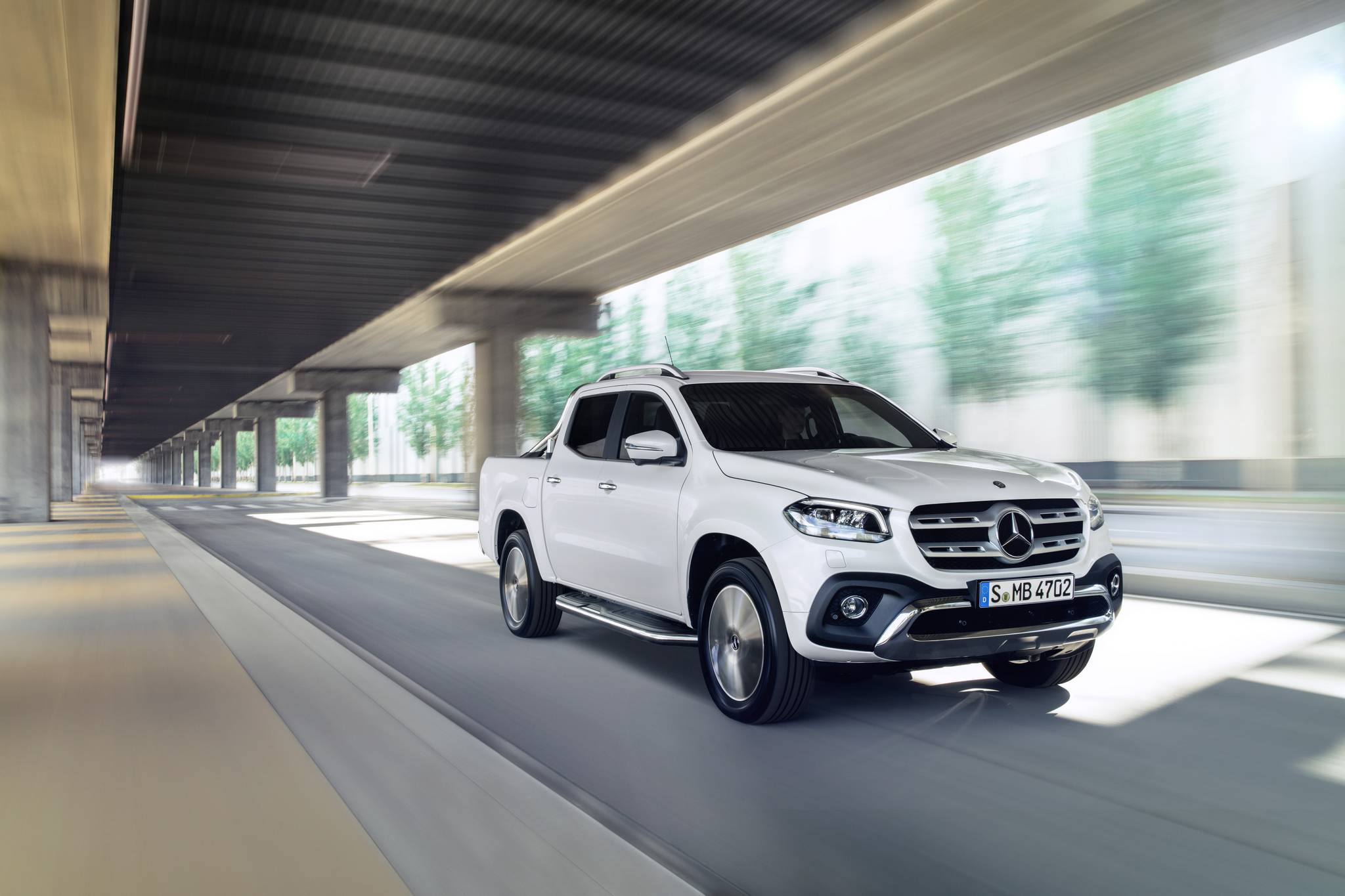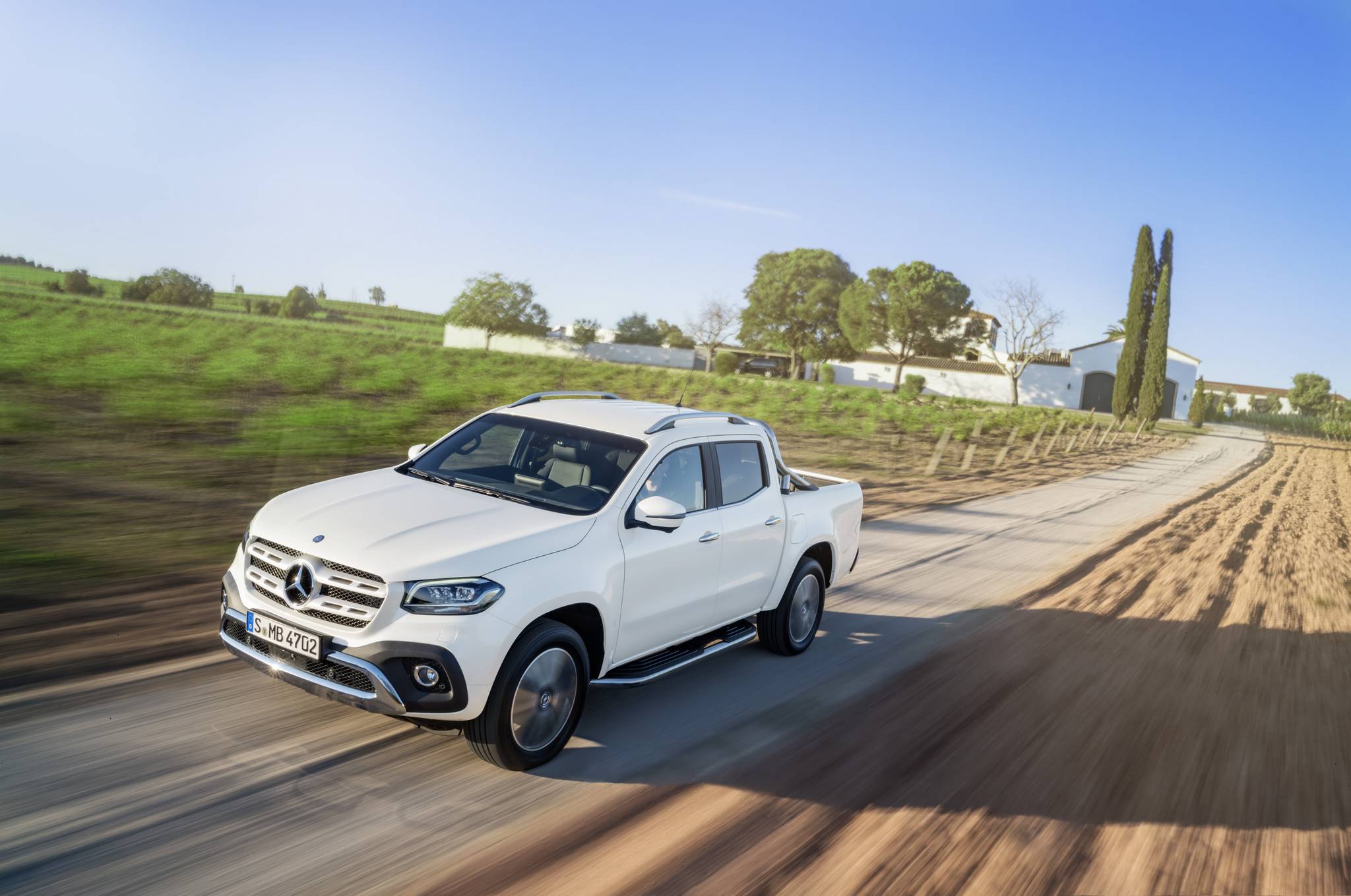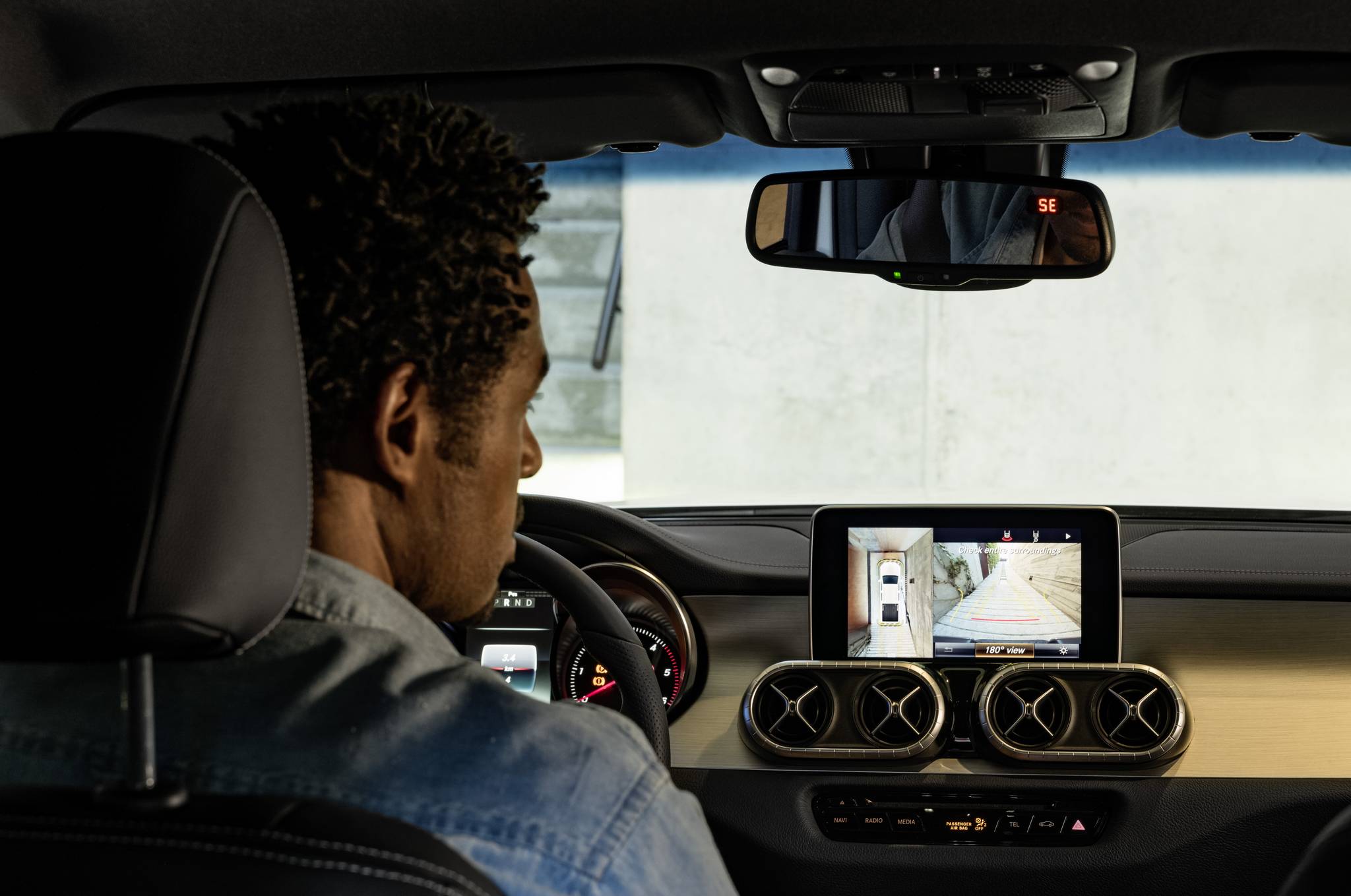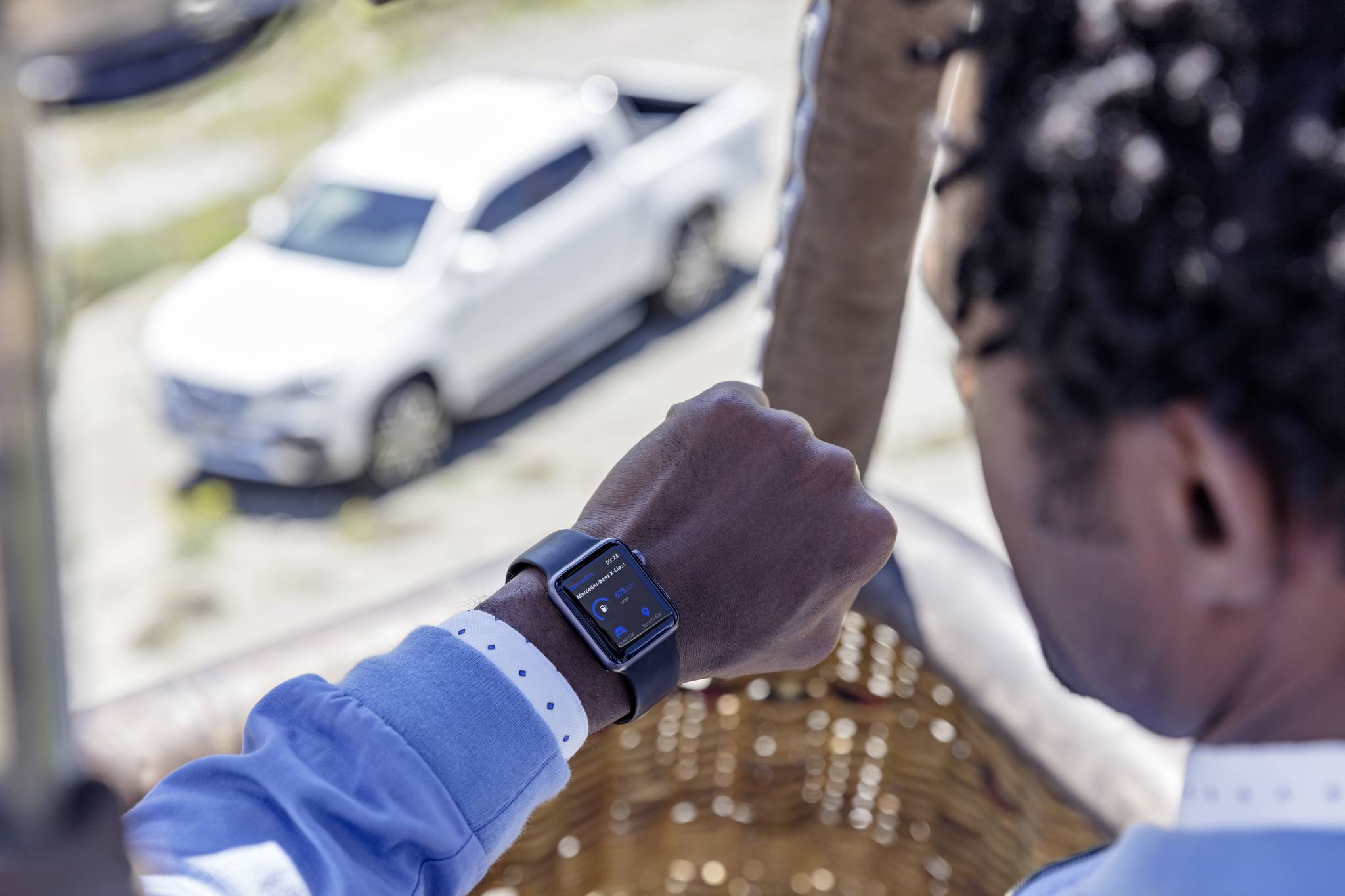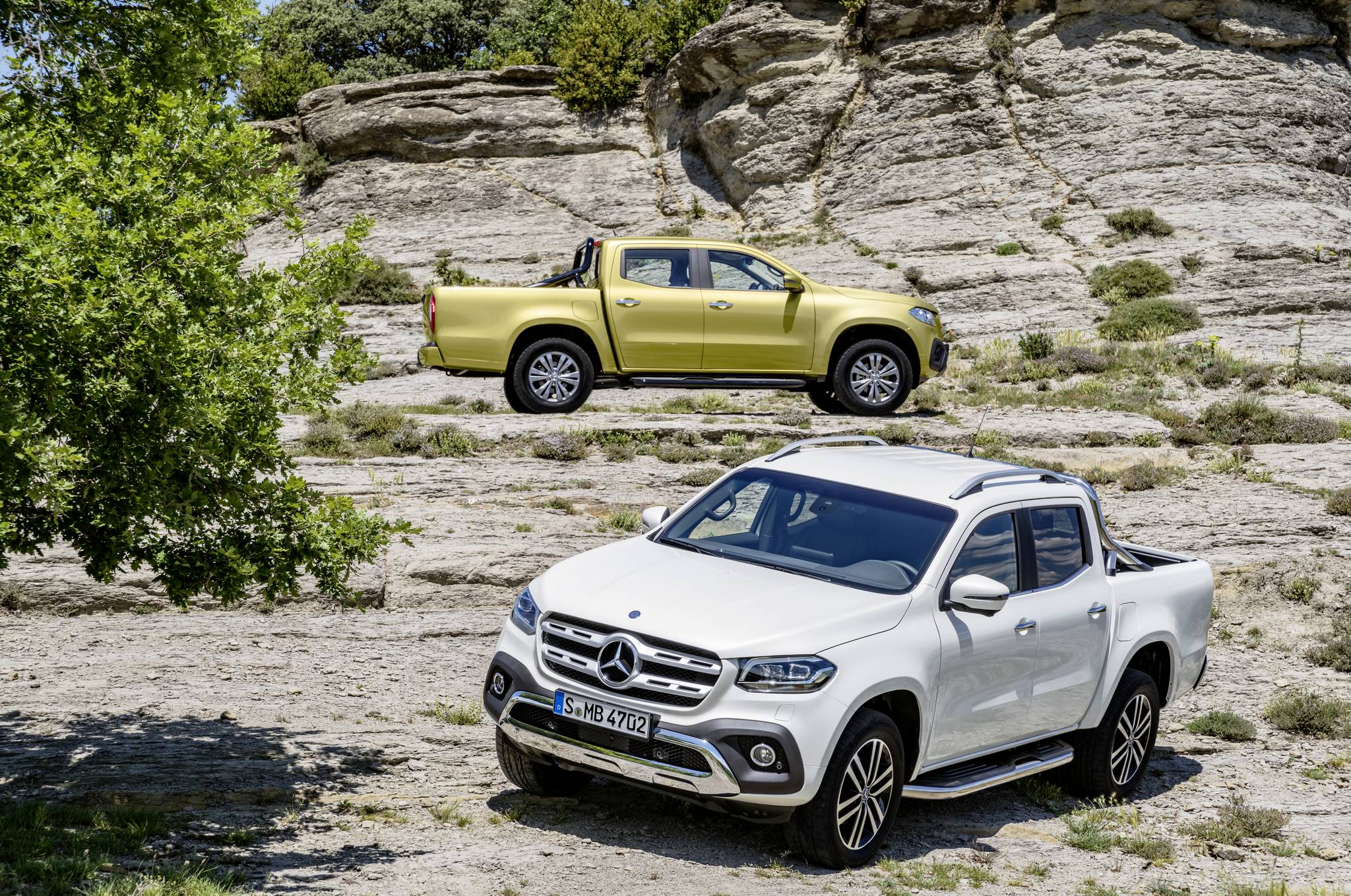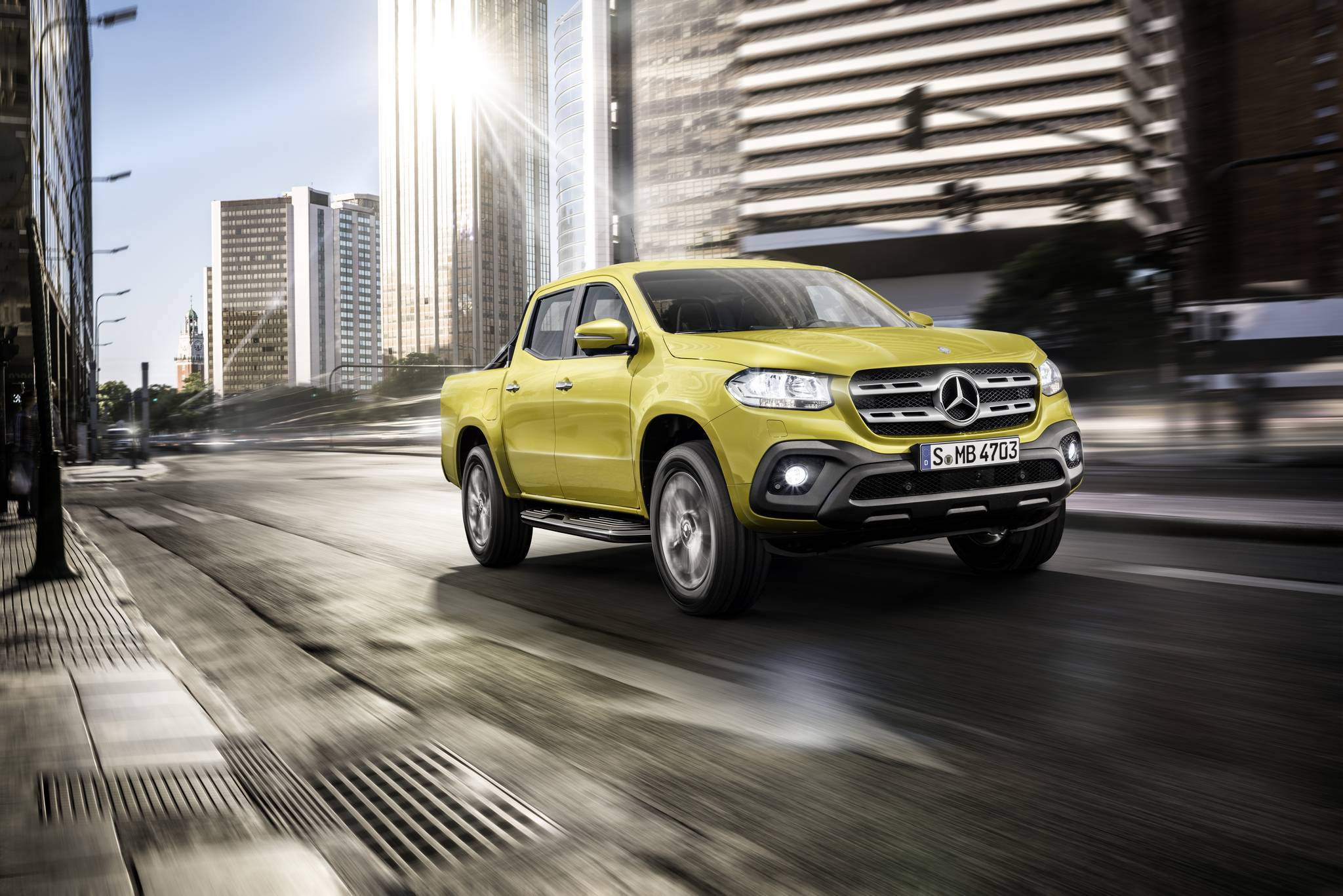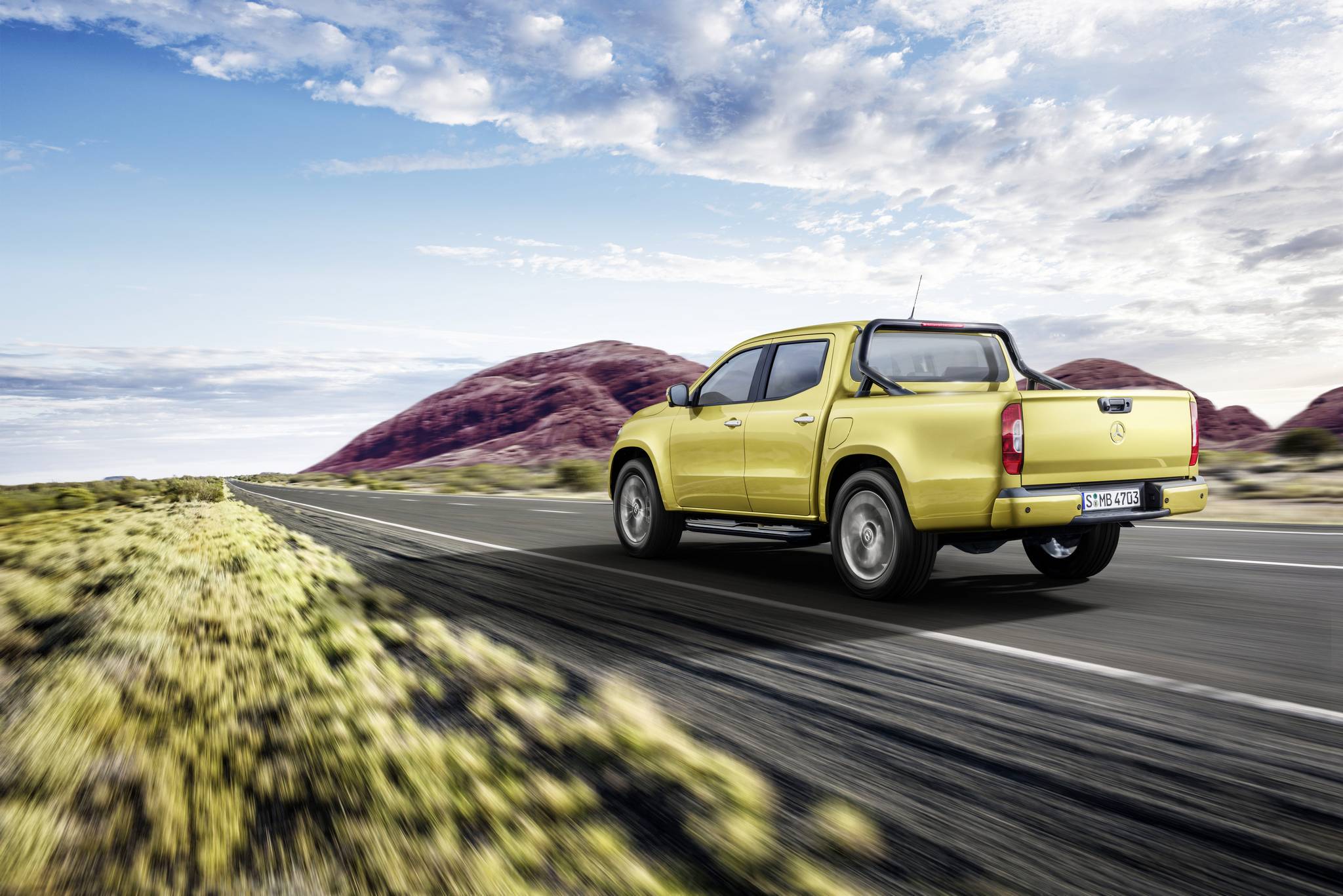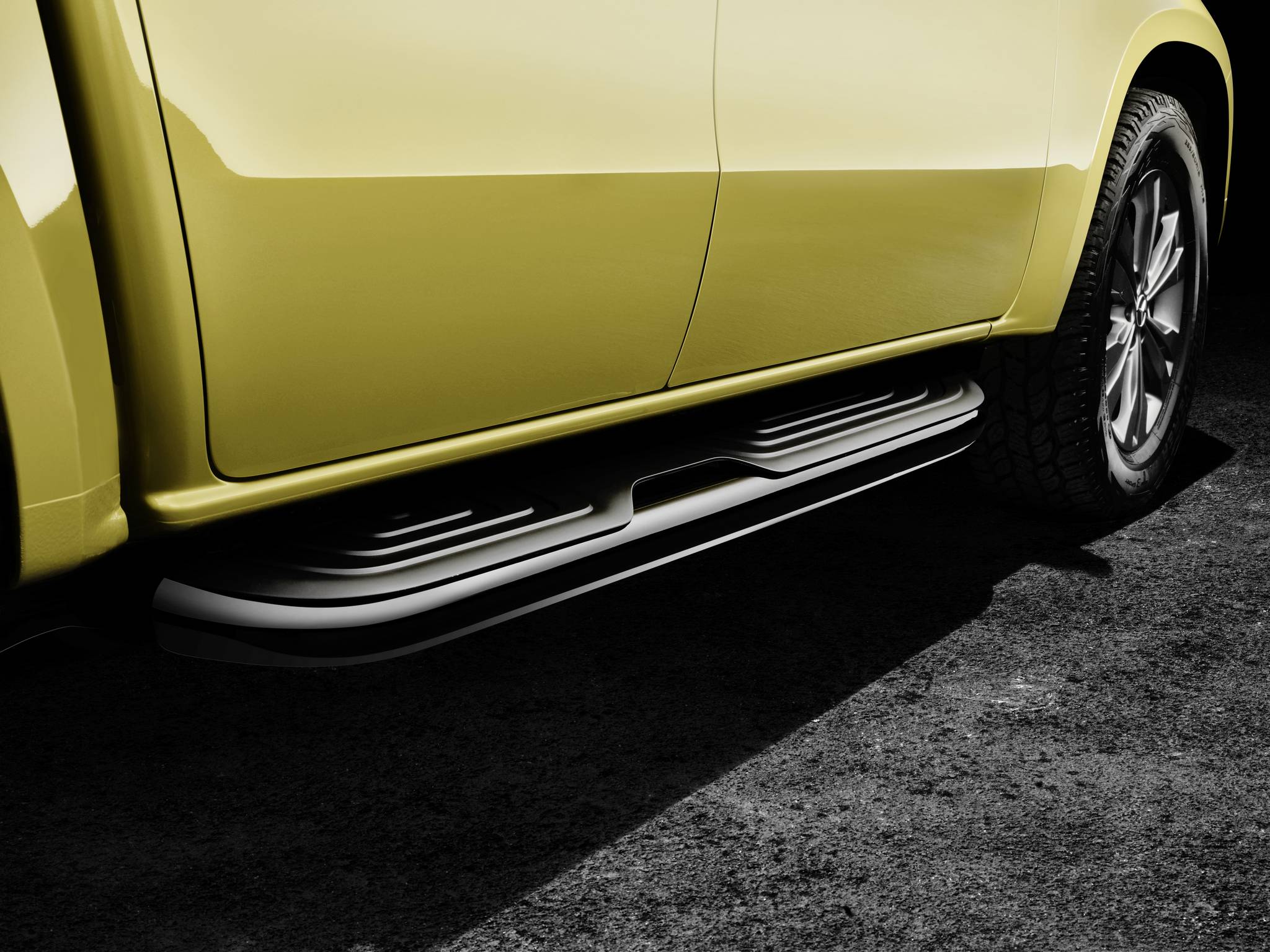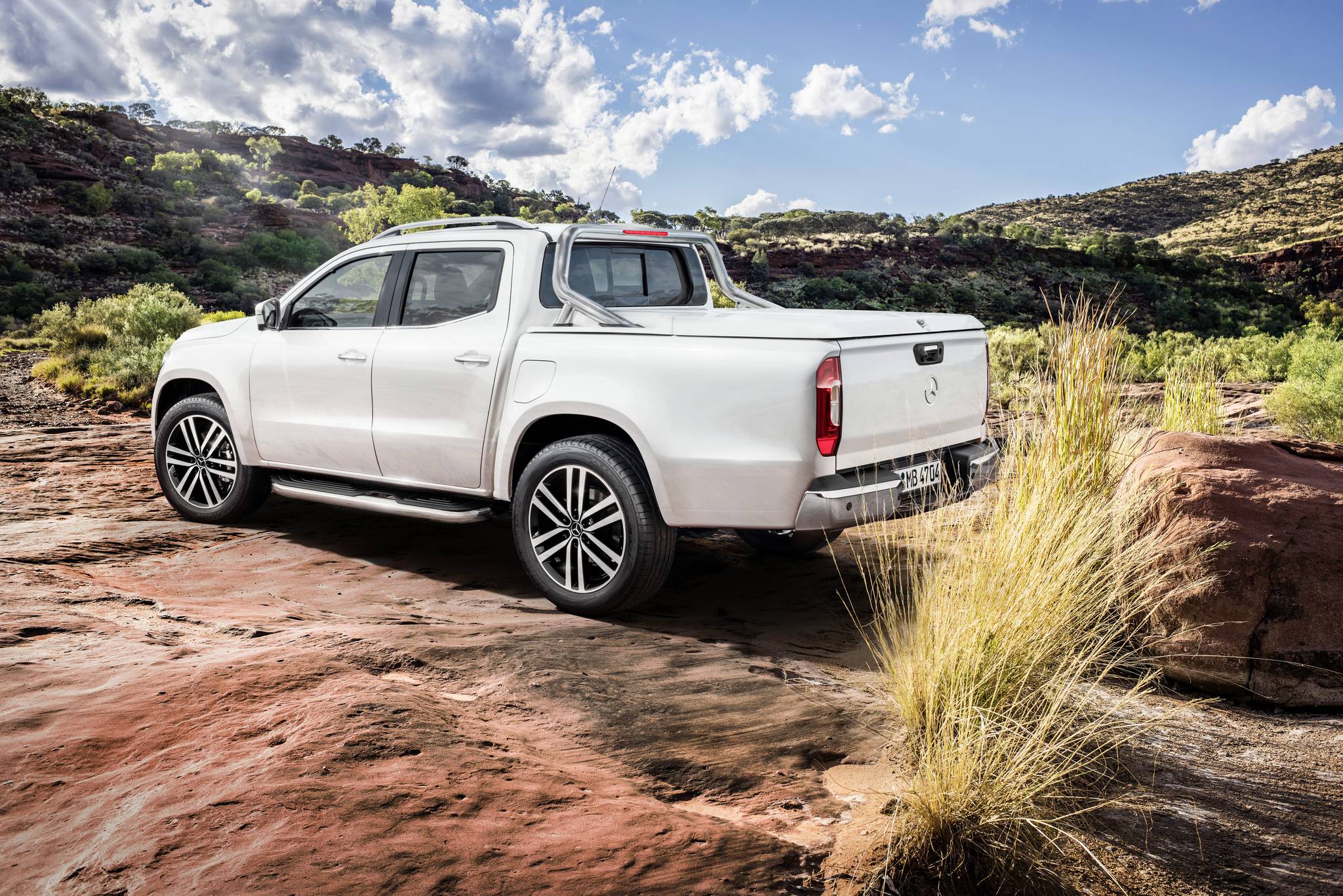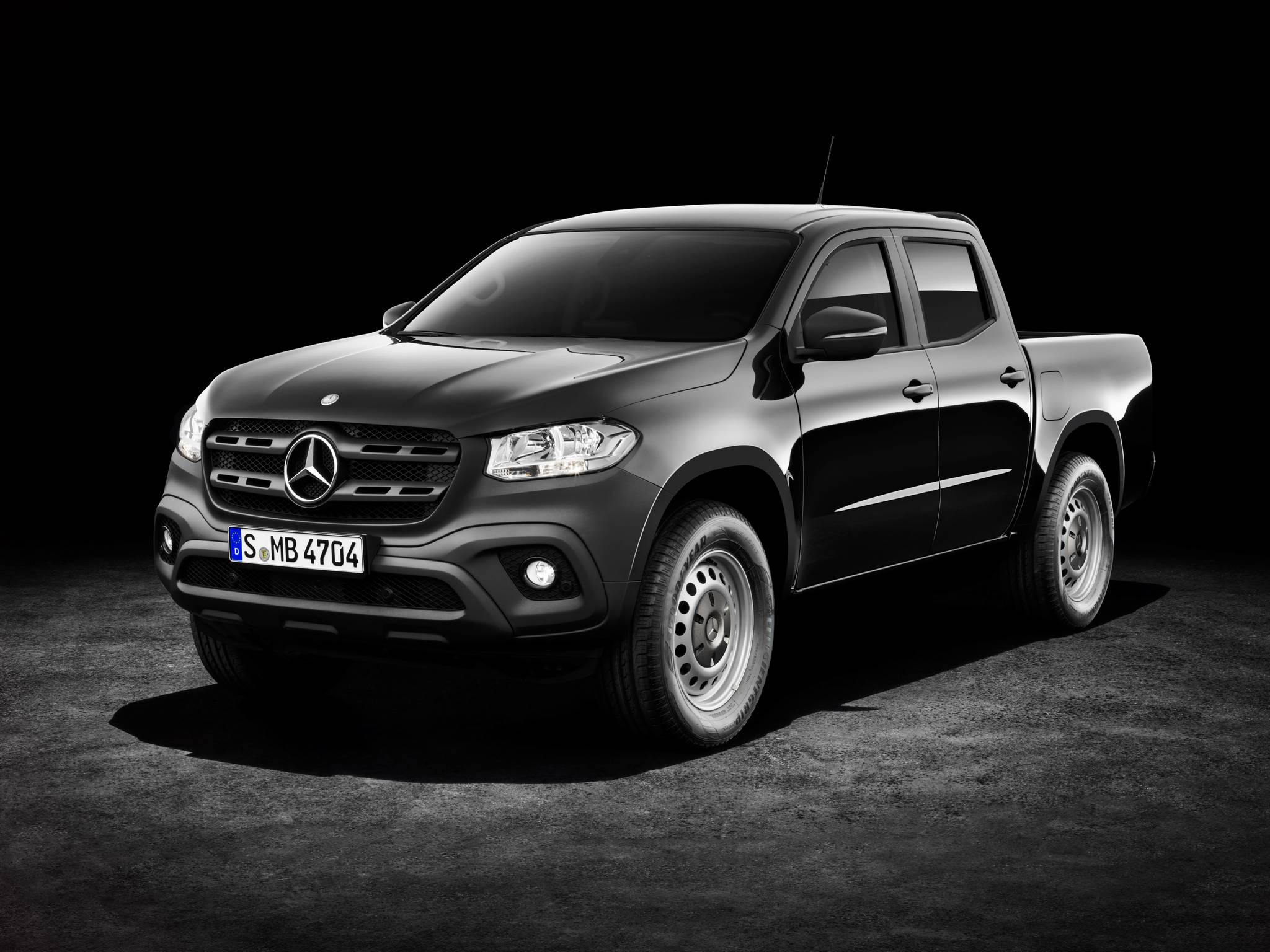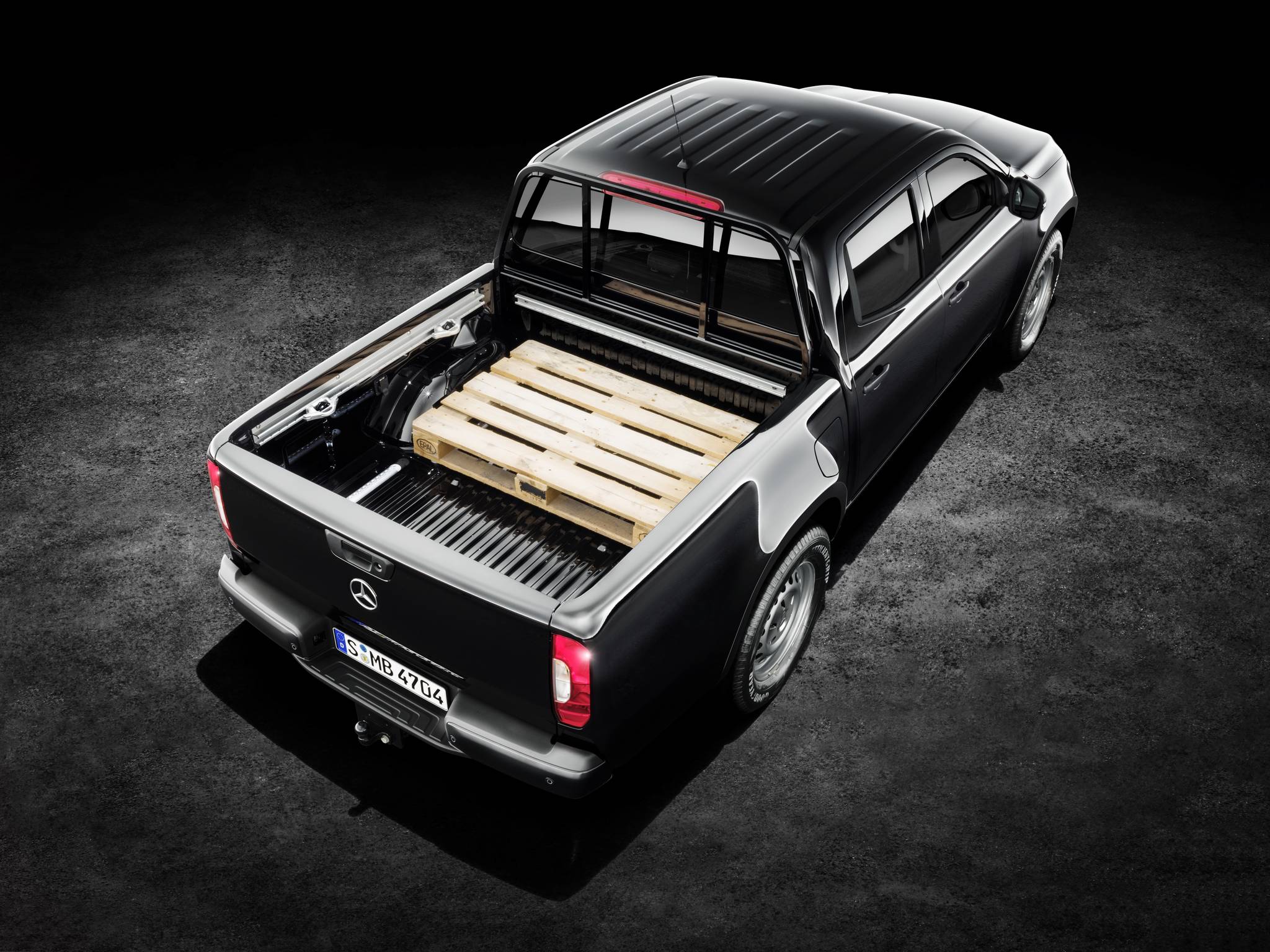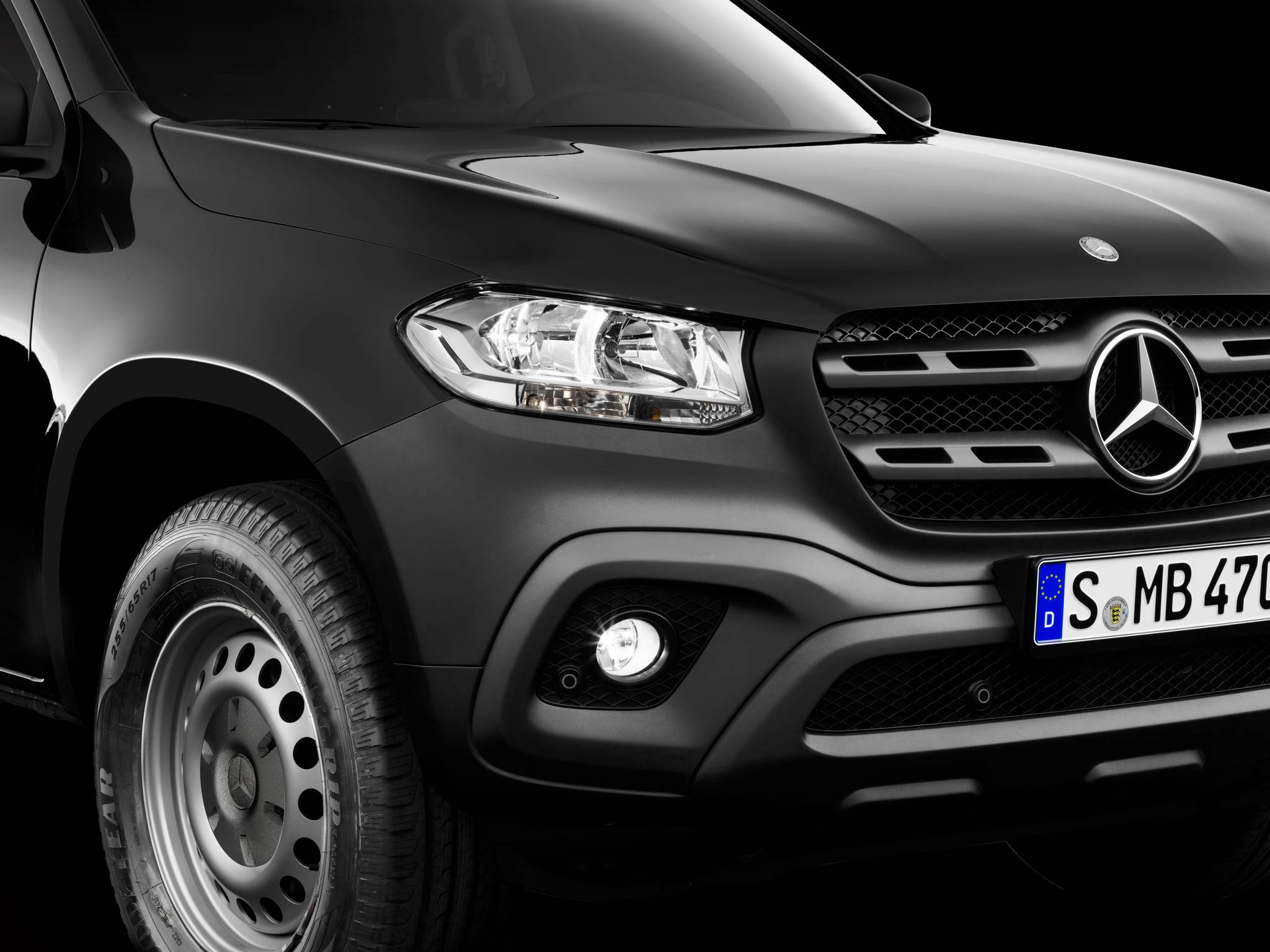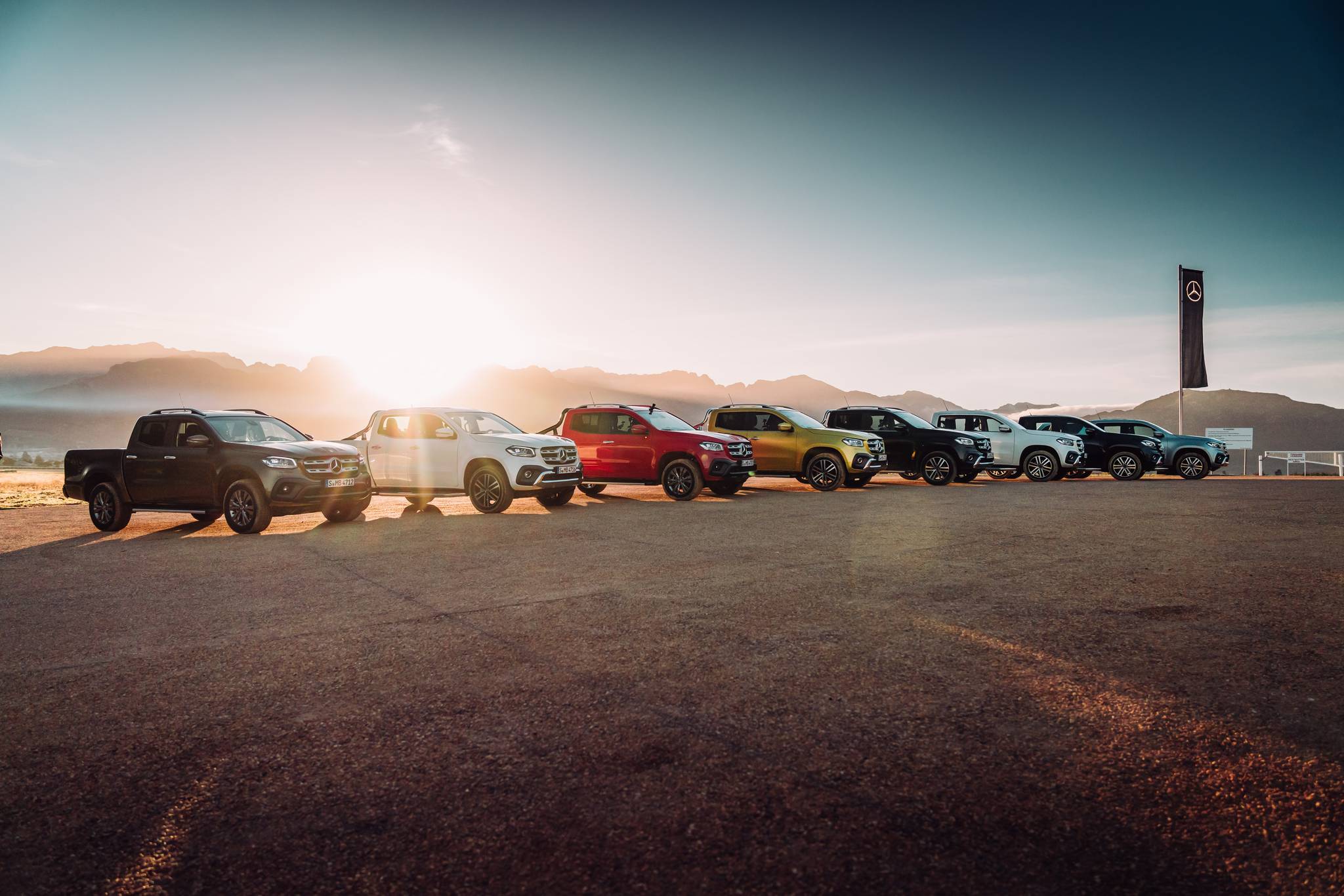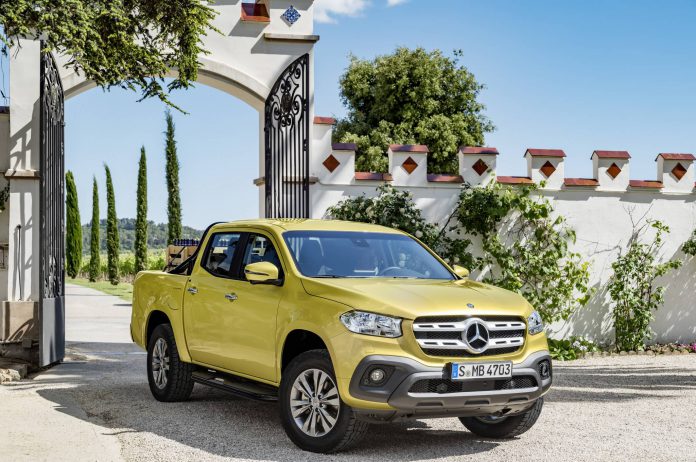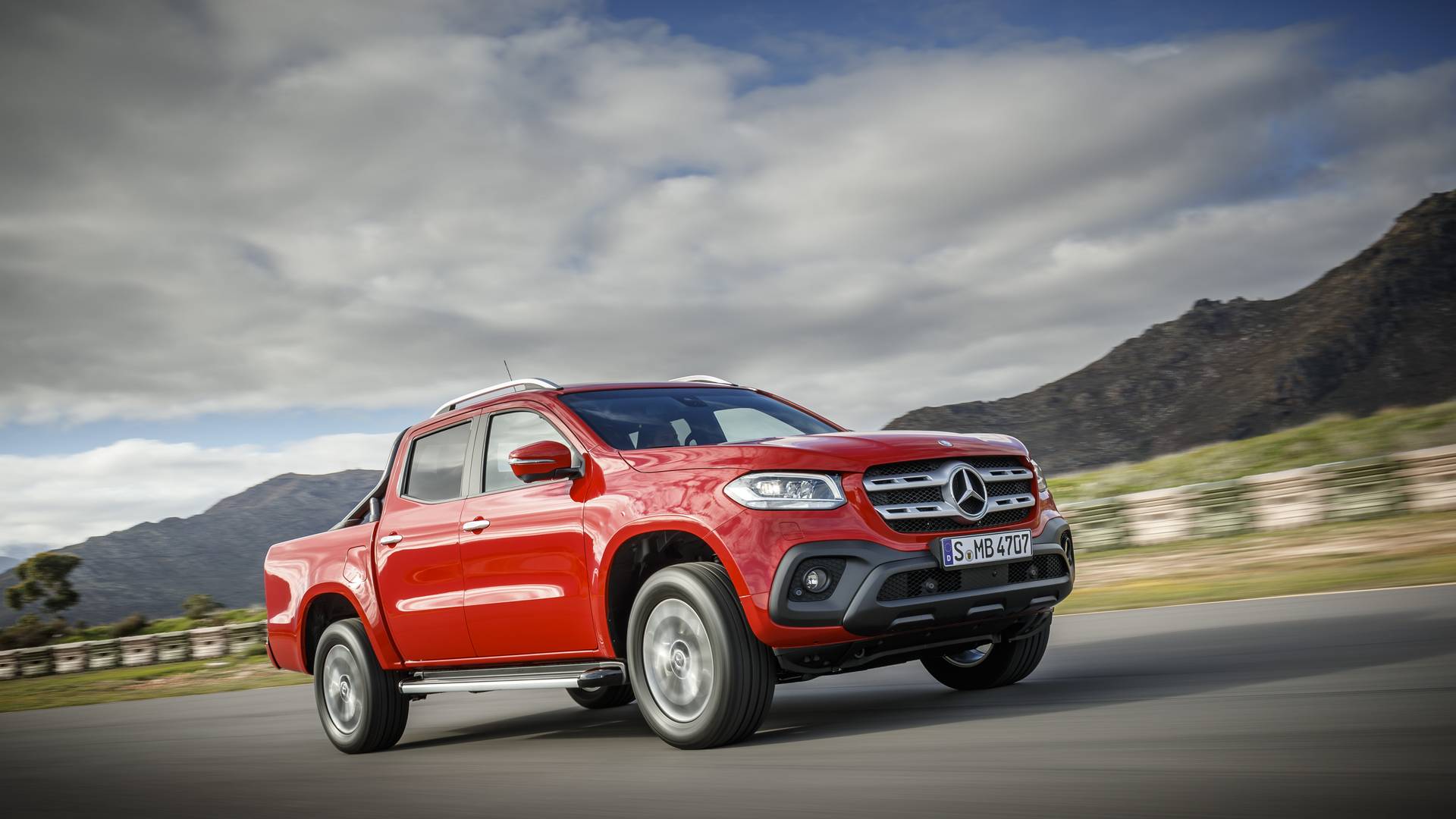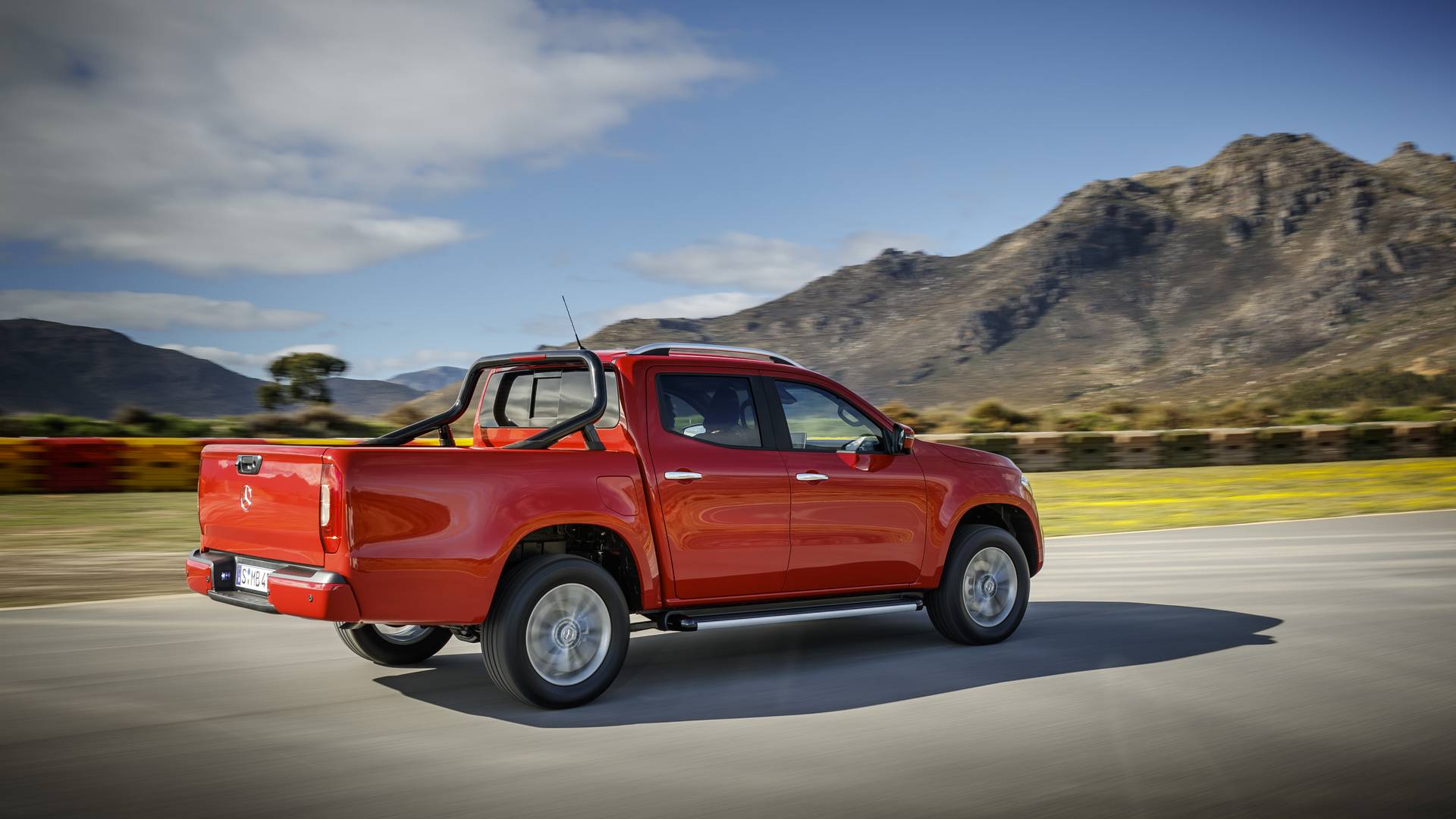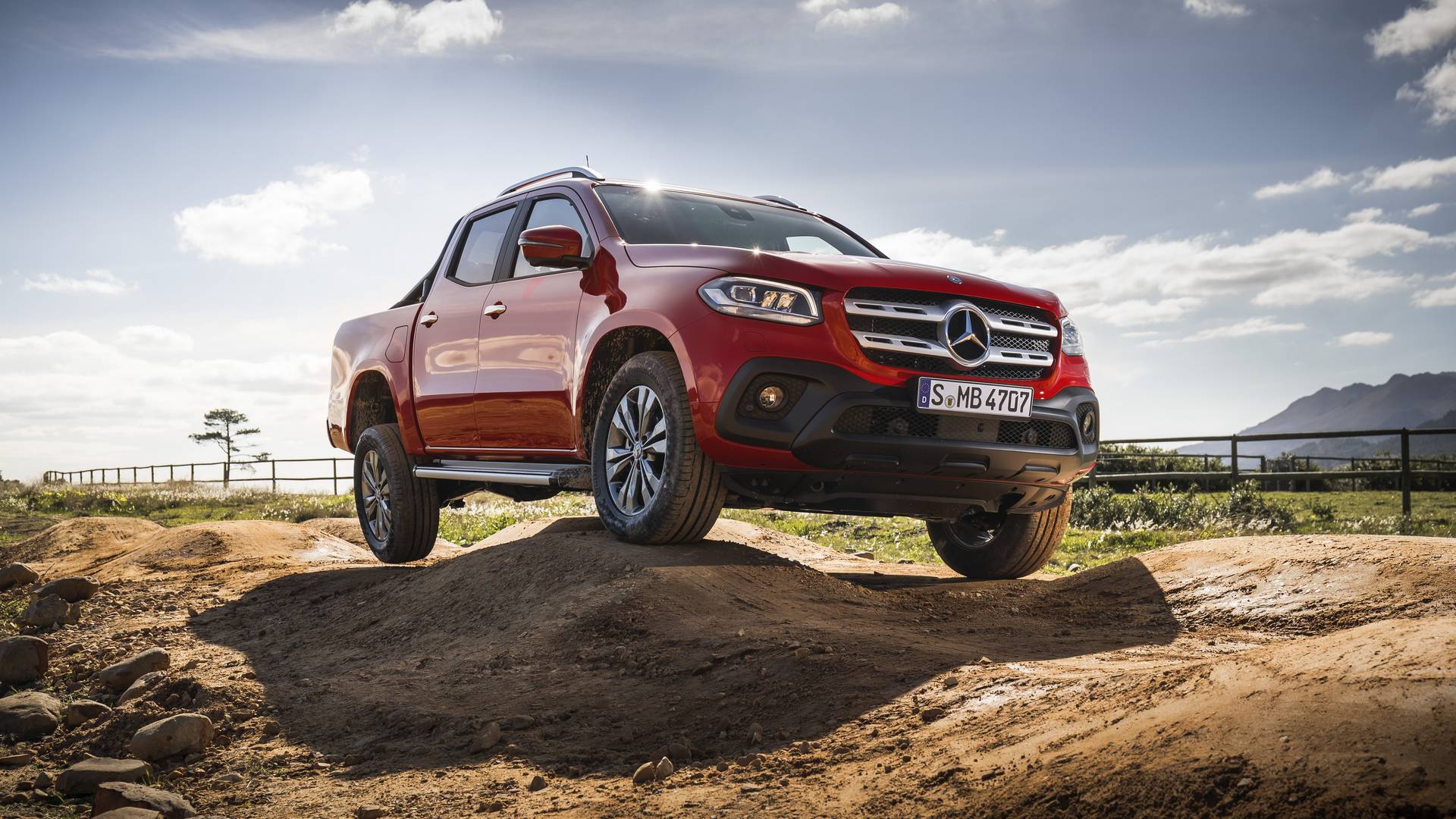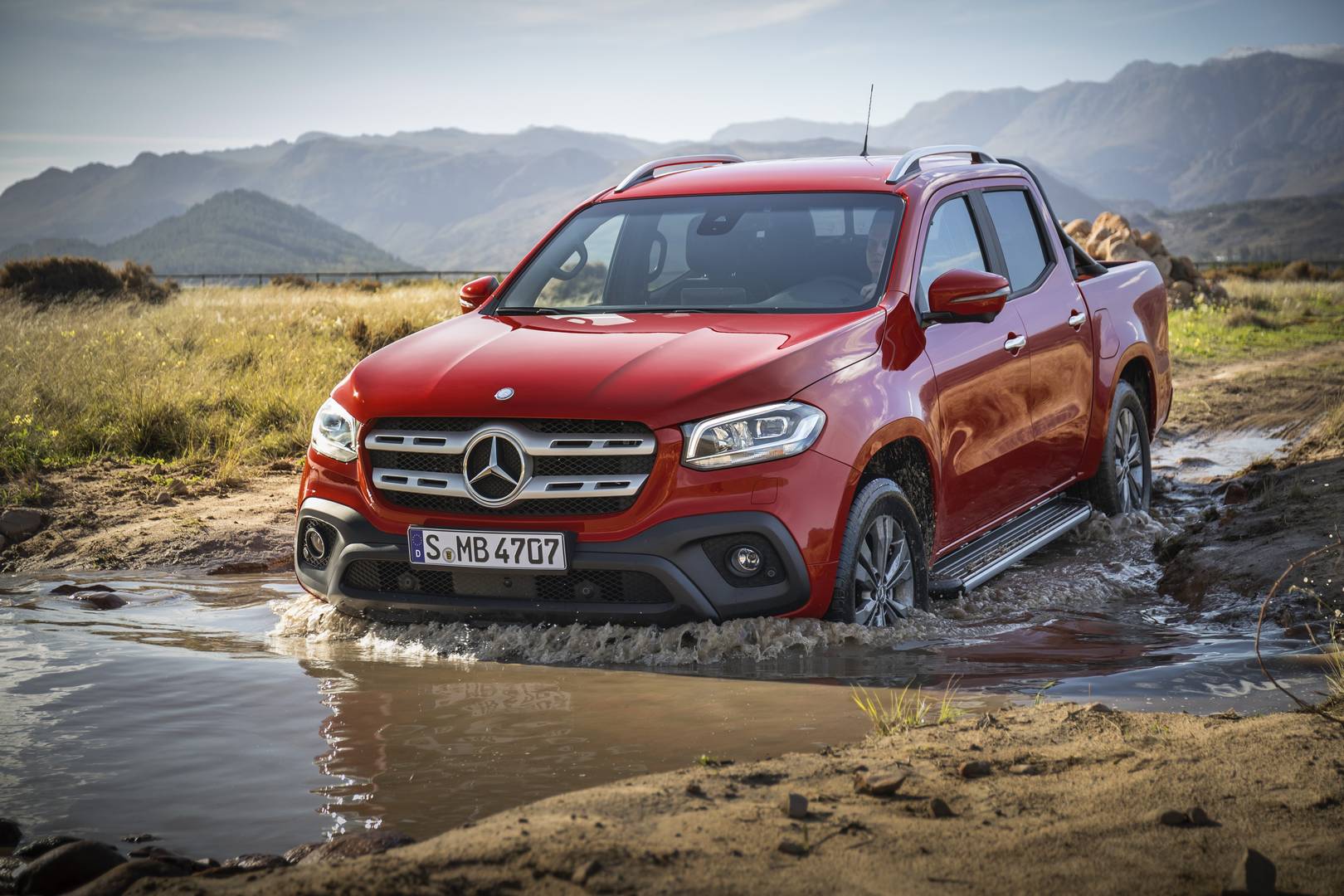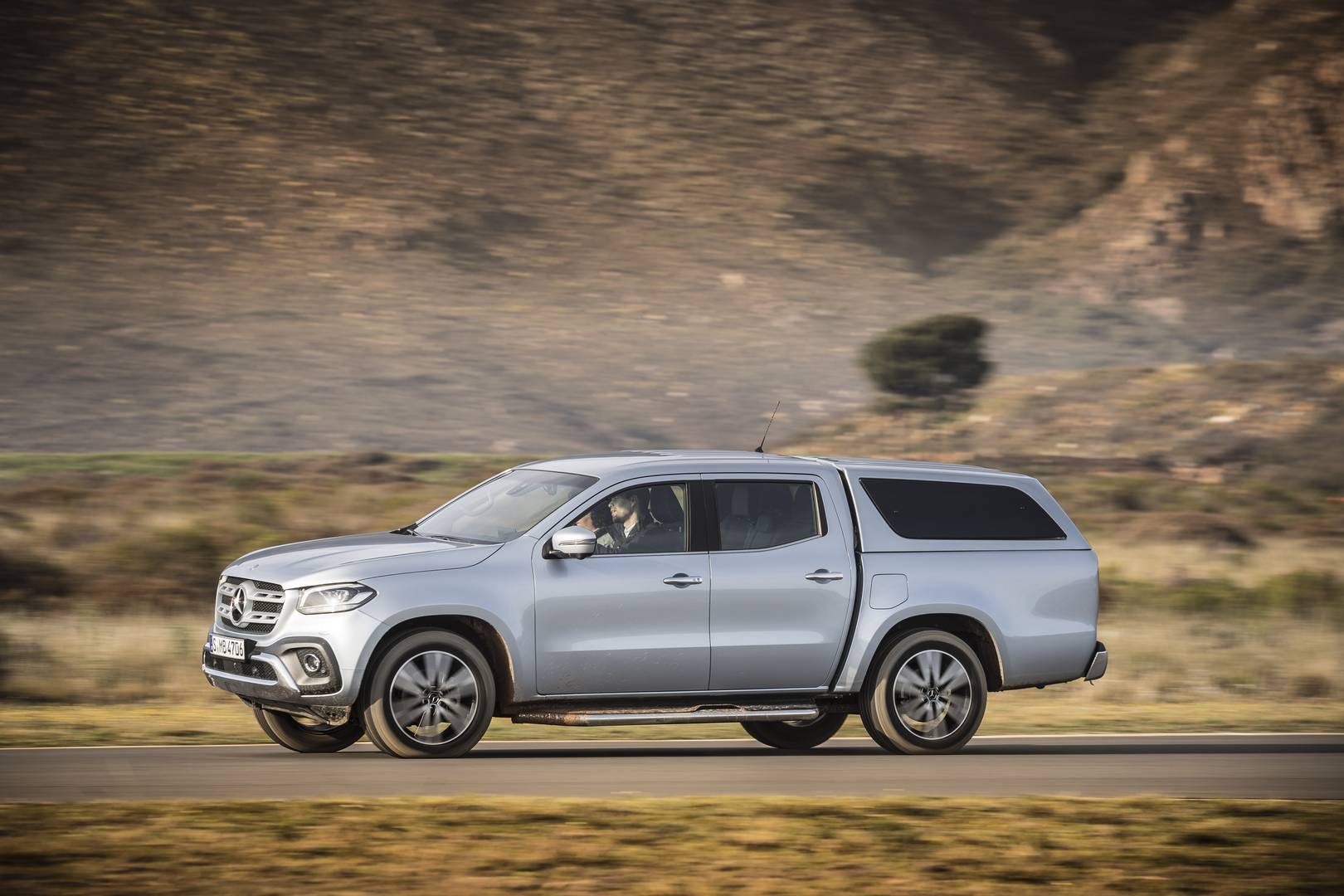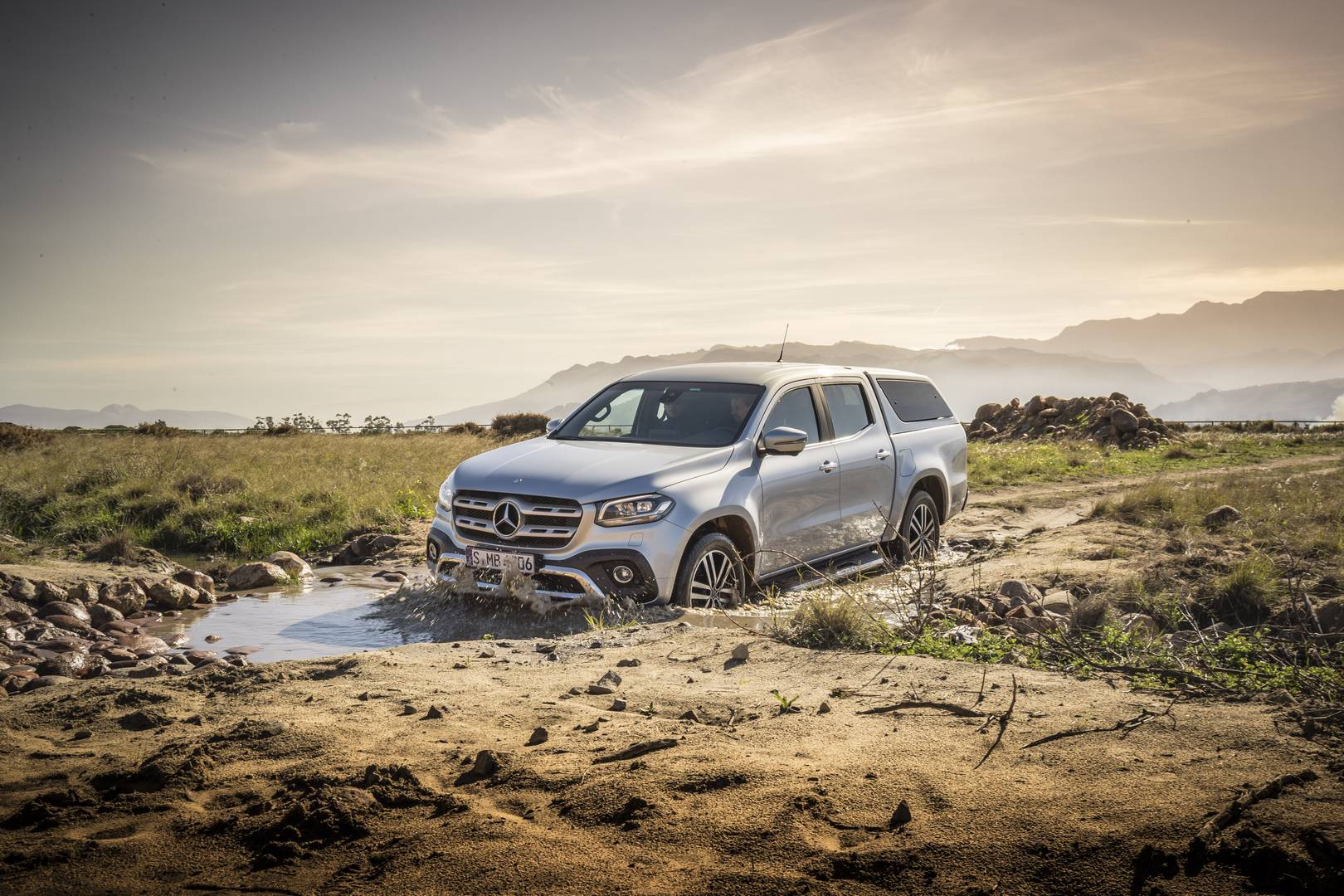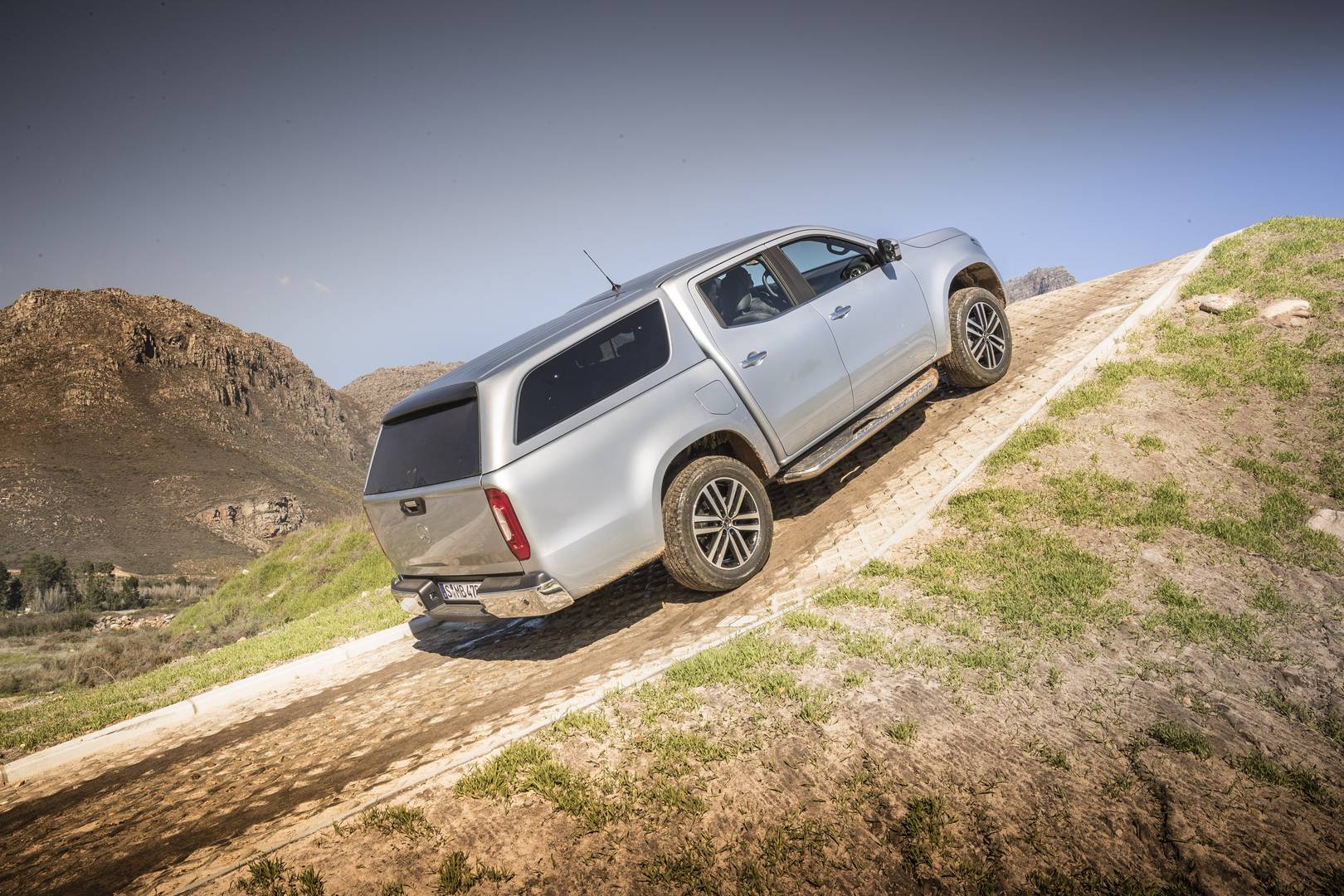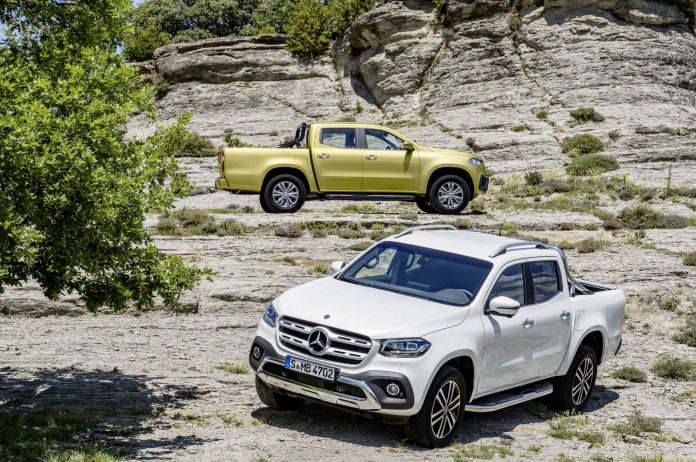Tuesday night Mercedes-Benz unveiled the production version of their X-Class pickup in Cape Town. The morning after the official unveil we had a first opportunity to experience the new X-Class dynamically at a test track in Franschhoek, a wine region an hour outside of Cape Town. So, what is our first impression of the new Mercedes-Benz X-Class?
First of all the idea of a Mercedes-Benz pickup might sound new but there have been a few limited examples of Mercedes-Benz ‘bakkies’, as they are called in South Africa, before. In 1954 Mercedes-Benz South Africa created a pickup version of the Mercedes 180D and in more recent times the massive Mercedes-AMG G63 6×6 also features a pickup style design.
Having said that Mercedes has never offered a car in the popular fullsize or midsize markets. The fullsize segment is predominantly popular in North America but market research shows an increasing demand for mid-size pickups in countries across the world. And this is the segment Mercedes-Benz is aiming to conquer with the new X-Class. To give you an idea of what mid-size actually means; the X-Class with its double cabin measures 5.39m in length. That is about 50cm shorter than the smallest version of the most popular full-size pickup; the Ford F-150.
The birth of the X-Class comes from a cooperation with Nissan. Quite uncommon for Mercedes-Benz passenger cars where Smart is sharing essential parts with the Renault Twingo but more common in the commercial vehicle segment where the Mercedes-Benz Citan van is basically a rebranded Renault Kangoo and the Sprinter is developed together with VW. The reason why Daimler and many other manufacturers establish partnerships and develop cars together are twofold. Most important reason is to reduce the immense investments required to develop a new car from scratch which also means a premium manufacturer like Mercedes-Benz can offer the car for a lower price than when it would have been a 100% Benz. Secondly it can reduce the time to bring a new car to market by several years giving a competitive advantage.
The X-Class shares a platform and some of its components with Nissan. It is hard to express just how much of the car is similar as it varies from engine to engine but the key differences lie in the details. It is being built by Nissan on the same production line as the Navara.
Mercedes-Benz announced four different engine variants for the X-Class. Three diesel engines and one petrol engines. The two 2.3-liter diesel engines and the 2.3 liter petrol engine are four cylinder Nissan engines with an output between 163 and 190hp and 238 to 450Nm of torque. The 3.0 liter V6 diesel engine is built by Mercedes-Benz and will come to market as the X 350d in 2018. This car also comes with different drive modes and shift paddles at the steering wheel – a typical Mercedes-Benz features the four cylinders have to be without.
Design
A lot of the Mercedes-Benz appeal in recent years comes from the design. The X-Class design follows a lot of the Mercedes-Benz design practices set by Gorden Wagener. Masculine wheel arches and an aggressive front. The top part of the front is in line with the look of recent Mercedes-Benz SUVs and passenger cars.
The two X-Class concept cars shown in Stockholm last year already previewed a lot of design elements of the new X-Class. Although I’m personally a bit disappointed that signature design elements and features like the aggressive lower part of the front bumper and the circular LED rear lights highlighting the tailgate have not made it into the production version.
The X-Class is offered in three different versions: Pure, Progressive and Power. Pure features an unpainted front bumper and black which gives it a very raw but quite cheap appearance – it is also considered the workhorse of the three. Progressive contains more equipment and all parts painted in body color. The Power version is the most lifestyle version with higher end exterior optic and more luxurious interior materials.
Interior
On first impression, the X-Class is a real Mercedes-Benz. The top part of the dashboard looks great and features nicely designed air vents and clean surface and the usual infotainment screen. The lower part of the dashboard however reminds me a lot of a 1990s Subaru. Main reason is the look of the switchgear carried over from Nissan 1 to 1 and the shape of the automatic gear selector. Surrounded by hard and cheap looking plastics this is not what I expect of a Mercedes-Benz. Other slightly out of place elements are the controls for the heated seats – again reminding me of parts from 1990s Japanese cars.
The X-Class is a mid-sized double cabin truck which means there is two separate front seats and a rear seat bench. Space in the rear seat is limited both in terms of leg- and head room but fits children and small adults.
Infotainment wise you can expect similar systems as in the latest V-Class and C-Class although some of the more expensive options are dropped to keep the car affordable. The same goes for the assistance systems, the X-Class does offer 360 degree cameras, parking sensors and lane assist as optional extras but the lack of adaptive cruise control puzzles me.
In addition to the standard equipment Mercedes-Benz developed and designed a range of optional accessories from front, side- and roll bars to several different rear covers.
Test Drive
Usually we won’t get to experience a car dynamically until a few months after the world premiere but the Mercedes-Benz Vans team – who are responsible for development, sales and marketing of the new X-Class – have decide to give us a little dynamic taste of the vehicle with a passenger ride at an on- and off-road test track at the Franschhoek automotive museum.
The chassis of the X-Class is very much similar to other mid-size pickups using a ladder-type frame which offers the pickup its ability to transport heavy goods as well as perform well in rough terrain. Mercedes-Benz aimed to add a new level of comfort and driving dynamics to this existing platform. The suspension consists of a double wishbone front axle and a rear multi-link solid axle with coil springs front and rear.
Mercedes-Benz offers the X-Class with two different ride heights, the standard one in Europe is the 202mm for more dynamic on-road handling. In the other markets, the ride height is 20mm higher for improved off-road capabilities. Our test car is specced according to European standards and even though a front stabiliser bar is added there is still quite a bit of body roll on the road – certainly more than the standards Mercedes-Benz sets with its SUVs.
Off-road the driver first has to engage the high range 4WD system – which has to be changed to RWD as soon as you come back to the tarmac. This is because the 4-cylinder engines come only with a Nissan four-wheel drive system which has 2WD mode for the road, 4WD high- and low gearing modes for off-road. A rear differential lock is optional.
With the ride mode engaged the pickup takes rough terrain with ease. In fact, the tougher the obstacle the more stable and smooth the car feels. On faster off-road bits there is quite a bit horizontal movement in the cabin but it takes bigger rocks and large obstacles at lower speed with ease and in fair comfort.
Another very noticeable thing is the silence in the cabin. Wind- and engine noise are kept out very well. Mercedes-Benz clearly added a lot of refinement to a segment otherwise known for its rugged workhorses.
What about the competition?
It is very hard to present an all compassing comparison with the competitors are the difference between the various markets worldwide are so different. Most importantly the X-Class is not coming to the United States for now. Customer deliveries will start in Europe from this November in Europe, from April 2018 in South Africa and Australia and from 2019 in South America.
In Europe, the most important competitors are the recently facelifted Volkswagen Amarok, the Toyota Hilux and the Ford Ranger. In Europe the Volkswagen Amarok comes exclusively with a 3.0 V6 diesel, in other markets the four cylinder with their lower fuel consumption are more important so they are still being offered there. From this trio the Ford Ranger offers the best optional equipment including adaptive cruise control, complete infotainment and app connectivity.
Considering Mercedes-Benz aim to position the X-Class as a lifestyle vehicle the car that truly rivals it for coolness is the Ford Raptor – which is slightly larger and more expensive. This could change if Mercedes-Benz continues development and would expand the X-Class line-up with an AMG model – but they didn’t want to confirm an AMG version yet.
Conclusion
The Mercedes-Benz X-Class adds fresh design and refinement to a segment dominated by utility trucks. Sharing a platform with Nissan feels like a bit of a compromise as some elements carried over from the Navara are not up to the standard we have come to expect from Mercedes-Benz, especially in the interior. Adaptive Cruise Control is missing as an optional extra.
The V6 is worth the wait as it will add more ‘Mercedes-Benz’ to the X-Class including permanent all-wheel drive, MB gearbox and three driving modes.

